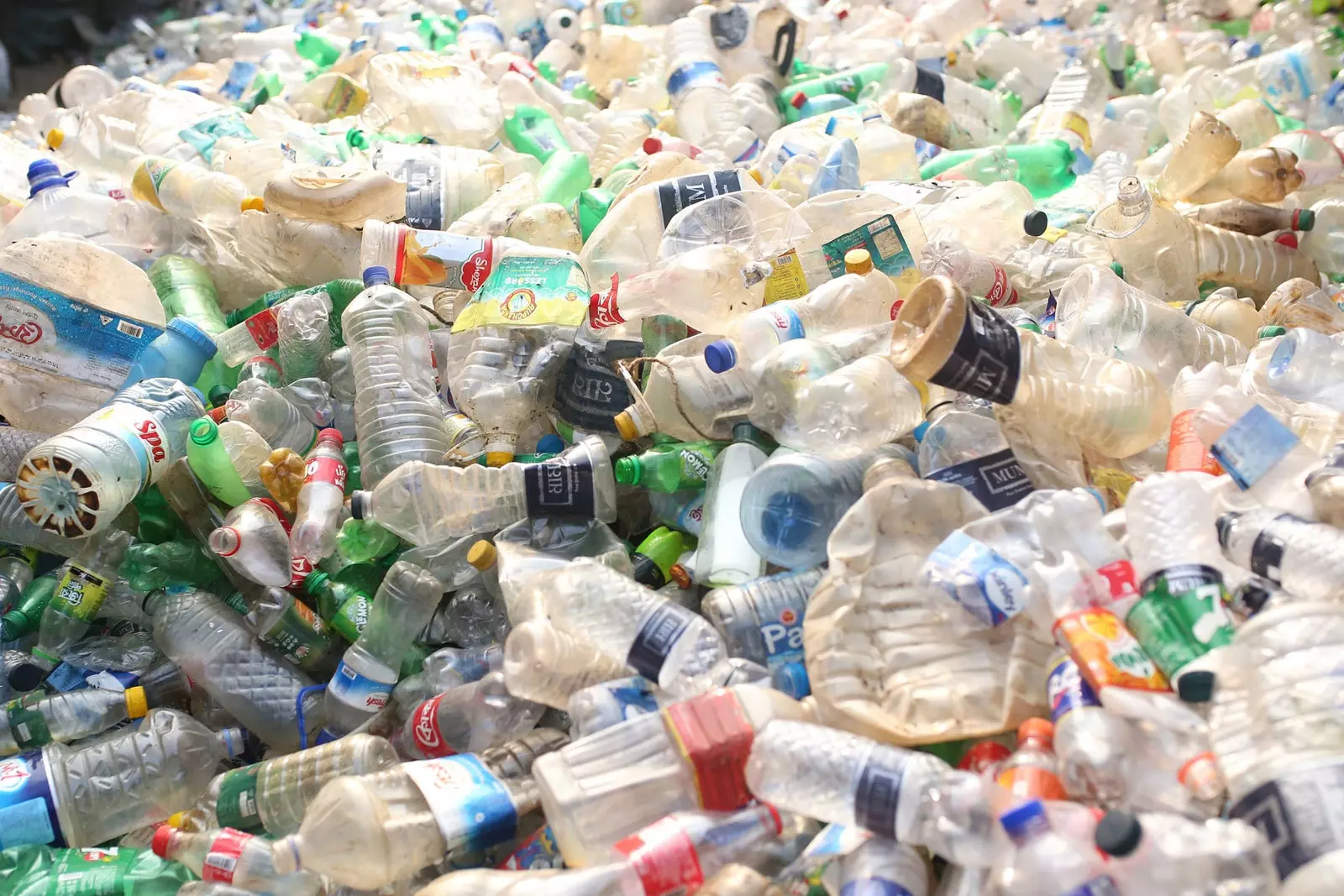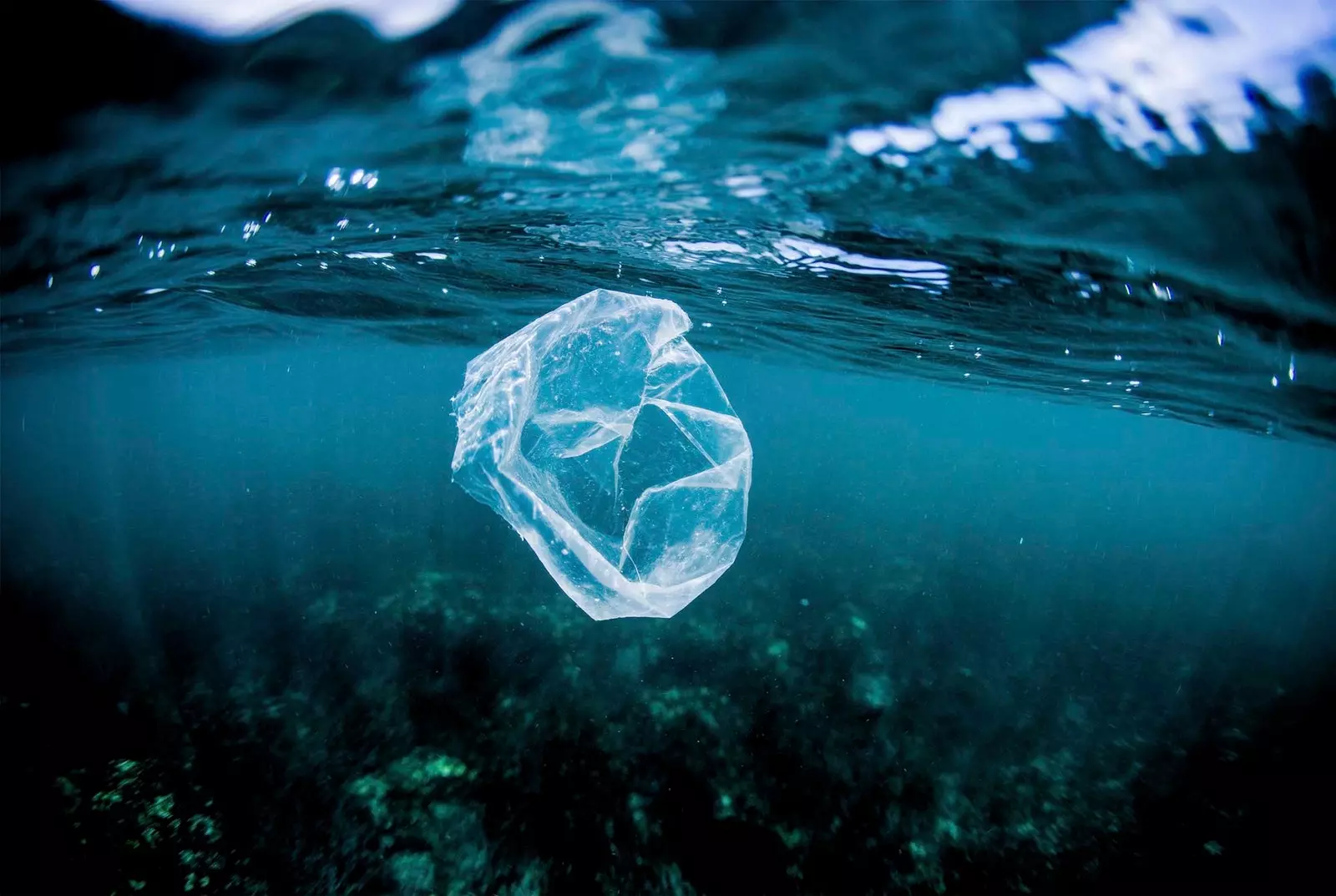
The 'seventh continent' or "Great Pacific Garbage Patch", a mass of waste with increasingly devastating effects
One day in 1997, the researcher Charles Moore she returned from Hawaii to California on his sailboat. Nevertheless, somewhere in the Pacific Ocean he soon became trapped in what appeared to be a large mass of garbage: beaches of bags and remains of clothing, straws or forests of plastic bottles, among other materials, that formed an enormous island whose extension was lost in the horizon.
By the time he returned, Moore had made other researchers aware of the existence of that place known today as the "seventh continent" or "Great Pacific Garbage Patch", a mass of waste located in the North Pacific whose effects on the environment throw increasingly devastating effects.
Especially when this "continent" has an extension equivalent to that of Spain... by seven times its size.

It is estimated that 80% of the garbage accumulated in this great stain comes from land areas
A PLASTIC MONSTER
The seventh continent owes its location in the North Pacific to the so-called vortex current points, that is, winds that rotate in opposite directions creating eddies and, therefore, attracting debris from different parts of the planet.
A monster made up of 80,000 tons of plastic which, beyond a climatological question, supposes a mirror both of our practices and forms of consumption and of their negative effects on nature.
“Plastics dumped into the sea slowly degrade in microplastics that have already entered the entire marine food chain made up of birds, fish, molluscs or plankton”, account to Traveler.es Julio Barea, responsible for waste campaigns at Greenpeace Spain.
“During all this time until they degrade, plastic objects that reach the sea can cause serious damage to marine fauna. Currently, some 700 species of marine organisms are affected by this type of pollution, in addition to more than a million birds and up to 100 thousand marine mammals who die as a result of these masses of waste, ”he explains.
All this, not to mention the amount of dipped plastics: “This is just the tip of the iceberg,” Julio continues. "70% of plastics are already accumulated in the seabed, including the most remote place on the planet, the Mariana Trench."
CHANGE OUR HABITS
When it comes to looking for the origin of this great global threat, all the answers point to human activity. It is estimated that 80% of the garbage accumulated in this great stain comes from land areas, while the remaining 20% comes from the ships that sail the ocean.
If we dig a little deeper, countries like China, the Philippines, Indonesia, Thailand and Vietnam produce more garbage combined than the rest of the world through coastal dumps or rivers overflowing with garbage (for example, the Citarum River in Indonesia is the most polluted in the world).
A problem that also does not relieve responsibility from other places on the planet such as United States, where up to 33.6 million tons of plastic are consumed, of which only 9.5% is recycled. In the case of our country, only 25% of total plastics are recycled.
"Must curb the consumption of plastics , because all the waste present in the seas has been produced on land”, continues Julio. “It is also necessary do not use or buy throwaway products compulsively, bet on extending the life of things and repairing everything that can be done. Reuse, refill and ask governments to return to reusable packaging and promote a system of return and return.
New habits that we must foster from our own homes, especially when climate change threatens every country on the planet and “destroying” the seventh continent is not an easy task despite the different initiatives.
One of them, proposed in 2008 by the Environmental Cleanup Coalition (Coalition to Clean Up the Environment), relied on a fleet of ships destined to clean the North Pacific of waste. However, these processes are not enough when consumption cycles multiply day after day.
THE SEVENTH CONTINENT IS NOT ALONE
Although many experts still disagree on their full extent , since it is not so easy to calculate it, organizations such as Greenpeace confirm that its length is greater than that of the state of Texas, in the United States, while the journal Nature sets its diameter at 1.6 million square kilometers (three times the size of France).
The cornerstone of an ecosystem as silent as it is devastating that finds other "continents" in different oceanic points of the planet: after this first discovery in the North Pacific in 1997, another mass of garbage was discovered in the North Atlantic in 2009, in the Indian Ocean in 2010, in the South Pacific in 2011 (caused especially by the residual trail left by the tsunami in Japan that year), or a last one, in the South Atlantic, found in 2017.
And although the oceans have a greater tendency to form this type of "continents", also seas such as the Caribbean or the Mediterranean harbor large masses of garbage , although they are more dispersed. In the case of our country, The Algeciras area, in the Strait of Gibraltar, is considered to be the threshold of one of the largest marine dumps in Europe.
A phenomenon to which a new front should be added: the consumption of plastics through masks and gloves during the pandemic, already become a new enemy to beat. "Gloves and masks have already been detected lying on beaches, coasts and seas," says Julio.
“Predictably, in the coming months we will see how these elements will join the long list of plastic objects that we usually find in the oceans.” cobwebs that are born not only from large companies, but from our day to day and mentality.
From our awareness to determine how a small action can cause devastating effects that, of course, also affect our health in many other ways: "Let's not forget that, after all, Many of the species affected by our habits are consumed by human beings passing through our body”, concludes Julio.
